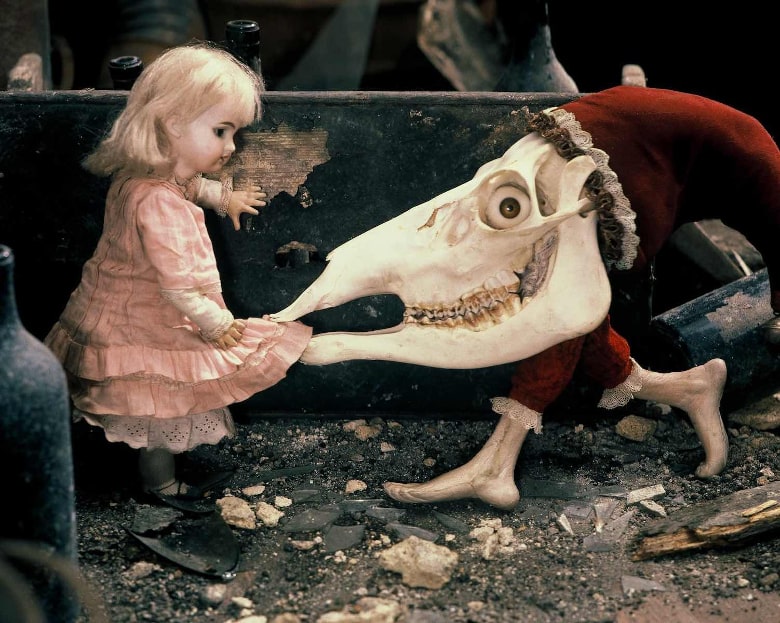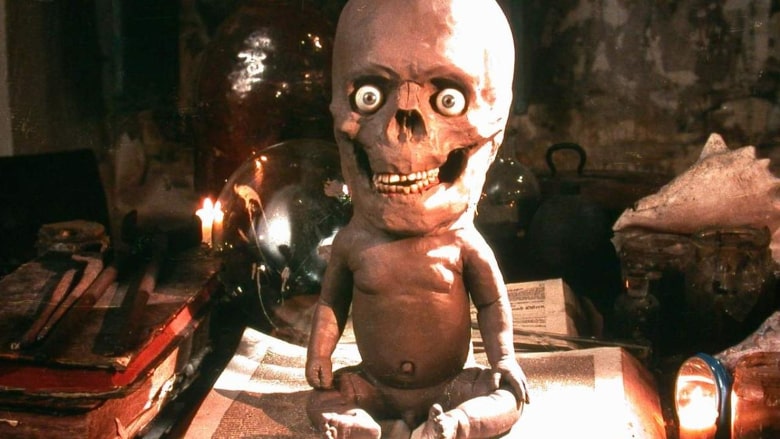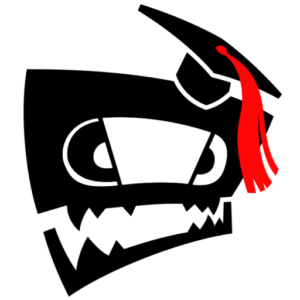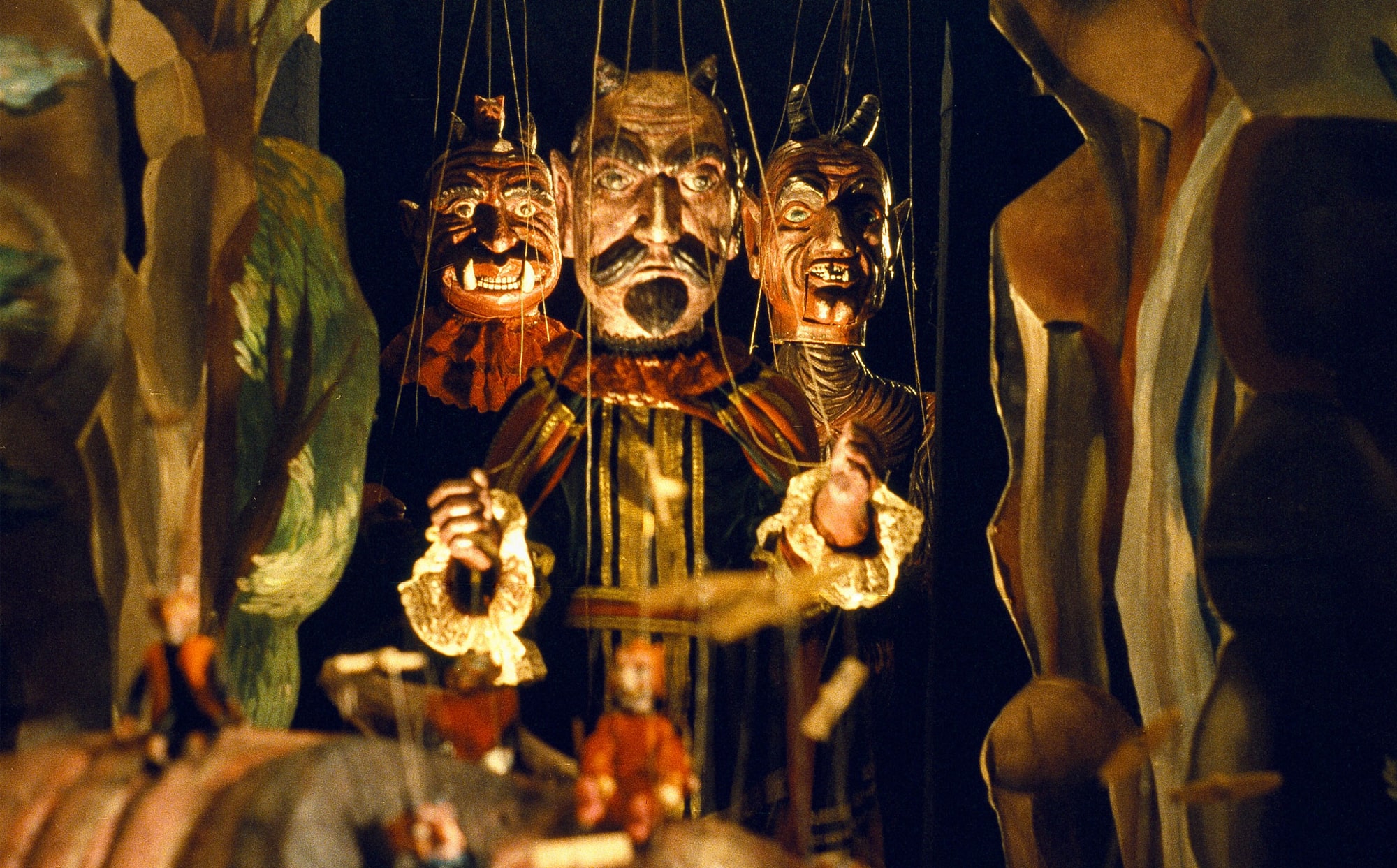As a card-carrying surrealist with an introverted philosophy, Jan Svankmajer is one of the most influential and obscure multimedia animators of Central Europe. The Czech director’s techniques in puppetry and stop-motion animation tap into the souls of everyday objects, characterized with deadpan tones. The unforgettable grainy absurdity and spiritual references of his films disgust and delight fans of the avant-garde and horror alike.
Jan Svankmajer: His Life and Horrors
Jan Svankmajer was born in Prague in 1934, describing himself as an introverted child. Enthralled by traditional European puppetry, he spent most of his time creating worlds within his imagination and giving life to unconventional objects. Often recalling his love for a Punch & Judy booth he received as a Christmas gift. In the ‘50s, he pursued his interests in theater, studying at the School of Applied Arts in Prague and enrolling in the Academy of the Performing Arts’ puppetry department.
But it would be the multimedia theater, Laterna Magika, that would introduce Jan Svankmajer to film. While not particularly known for creating horror, Jan Svankmajer’s uncomfortable aesthetic and understanding of surrealism as psychology invokes a horror from within. He utilizes diverse techniques that allow the audience a peek through the lens of grotesque divinity.
His body of work favors gothic literature and Slavic mythology. Reimagining multiple works of Edgar Allen Poe in more contemporary settings, he invokes a unique take on surrealist horror that will haunt his audience for years.
Fall of The House of Usher
In 1980, Jan Svankmajer released a short film based on Poe’s Fall of The House of Usher. Staying faithful to the original story, he replaced the characters with a system of objects in an exploration of tactile stimulus, claiming that the sensation of touch is often utilized in Poe’s psychological studies of characters.
Jan Svankmajer’s result was shot in black and white without actors and longing camera pans across patterned surfaces and stop motion animation. With a foreboding film score that’s reminiscent of American B-films, a free roaming coffin crawls through a thorny briar and sentient furniture sinks itself in a swamp. It transforms the classic tale of madness into a very pure definition of surrealist horror, climaxing in the unraveling of nature as the minds of the Usher twins are consumed with grief.
The Pendulum, The Pit, and Hope
Jan Svankmajer’s 1983 surrealist horror short borrowed from Poe’s The Pit & The Pendulum and Auguste Villiers de l’Isle-Adam’s story A Torture by Hope. Filmed from a grainy monochrome POV, our protagonist is captured by unknown enemies. A hooded figure leads the audience through claustrophobic catacombs to a mechanical torture chamber.
With whimsical renderings of hell painted across the scenery, it vaguely gives the impression of a carnival funhouse ride. Bags of grain act as counterweights to the swinging pendulum as our prisoner struggles against his restraints. Thinking quickly, he enlists the aid of hungry rats to free him from bondage. A brief flicker of hope with the other side of the coin reflecting the inevitable truth that they would have consumed his remains had his plan failed. Resisting the slow domination of machines, he dances back and forth with little sparks of freedom, in and of itself being an unnamable torture in the faint shadow of exhaustion.
Faust
Updating Goethe’s version of the German legend of Faust, Jan Svankmajer simultaneously honors Franz Kafka with 1994’s feature length film of the same name. Set in a mundane metropolis, the film deviates from the erudite title character by portraying him as a depressed drudge stuck in a looping rat race. Ignoring subtle harbingers at first, he is lured into an otherworldly puppet theater where he finds himself in the dressing room, holding a script. In a very meta scene, he defines himself as “Faust” by reading lines out loud. Jaques’ famous line from Shakespeare’s As You Like It is made gospel with an opening cue and Faust takes the stage.

Before the curtain rises, he slips through the theater and discovers an alchemist’s lab filled with tools of metaphysical knowledge. The imp of curiosity tempts him to experiment by animating a golem-like clay infant. Horrified when the child morphs into his likeness and foretells death, he destroys it.
Immediately he is approached by life sized wooden marionettes of an angel and devil. Presenting a fork in the road, Faust is goaded to choose either a path of righteousness or devote himself to the dark arts. Worldly pleasure and unlimited knowledge prove too tempting to refuse, and so Faust makes his decision. Summoning Mephistopheles through ceremonial magic, he strikes an infernal bargain.
This surrealist horror film offers a more nihilistic approach to the legend, borrowing elements from both Goethe and Marlowe but set in a dilapidated guignol. The jerky motions of human sized puppets walking about is unsettling for anyone that grew up watching the Puppetmaster films. When the cue light blinks red to alert Faust that the Devil has come to collect his due, he finds himself just another marionette hung on the wall. Controlled by the hands of fate, the quest for power always comes with strings attached.
Lunacy
2005’s Lunacy is Jan Svankmajer’s surrealist horror comedy, thematically focused on Edgar Allen Poe’s “The System of Doctor Tarr and Professor Fether” and “The Premature Burial.” This feature length movie parallels The Cabinet of Dr. Caligari as well as utilizing historical elements of the life of Marquis de Sade.
Since his mother’s passing in a mental institution, Jean regularly has nightmares of being dragged off by hospital orderlies. Struggling with his loss, he encounters a strange fellow while making funeral arrangements. The man claims he is the Marquis de Sade and had also recently lost his mother. Forging an acquaintanceship, he suggests Jean voluntarily commit himself to help ease his grief and nightmares.

Desperate for penance, Jean agrees and admits himself to an asylum managed by a friend of the Marquis. As a patient, he is subjected to extreme methods of treatment ranging from indulging in decadent pleasures and vice to vicious corporeal punishment and acts of violence. It’s all part of Dr. Murlloppe’s vision of freedom by balancing mind and body.
There is a great deal of misdirection with the introduction of each character and blurred lines of who are the patients and who are the doctors. The film culminates in the complicated grief of Jean, his external battles with addiction, and finding an emotional familiarity within the darkness. Some aspects of Svankmajer’s Lunacy feel like a melancholy drama as seen through the eyes of Clive Barker, while other scenes echo the loneliness within Jodorowsky’s Santa Sangre.
The Ossuary and Other Controversies
Jan Svankmajer’s films were heavily restricted for over 2 decades, as his disturbing imagery and gritty aesthetic were considered politically undesirable. Although his work was never officially banned in his country, the distribution was suppressed after the 1968 Soviet invasion of Czechoslovakia. The regime installed in the fall of 1969 was infamous for its cultural repression. Filmmakers, particularly those of the “Czech New Wave,” were among the most severely persecuted.
In 1970, Svankmajer was commissioned to document The Sedlec Ossuary in Kutna Hora. Shot in black and white, the result was a 10-minute-long feature entitled Kostnice (The Ossuary). Loosely described as a real-life “horror documentary,” the Sedlec Ossuary’s creation came from a mass grave of nearly 70,000 casualties of the 14th century’s Black Plague and 15th century’s Hussite Wars. Kostnice features long textured shots of tomb stones and intricate repurposing of human remains. It’s all overdubbed with an actual tour-guide’s exhibit monologue as she addresses a group of children with flat frankness and warped humor. Jan Svankmajer did not shy away from themes of exploitation and tourism, which was considered an unacceptable subversion by the Czech Communist authorities. The film maker was forced to replace the soundtrack with a jazz arrangement of the poem “How to Draw the Portrait of a Bird” by Jacques Prévert.
A scathing critique of his short film, Leonardo’s Diary, arose in 1974 after its debut at the Cannes Film Festival. A Czech film critic negatively regarded it as “a strange piece of fantasy without socialist content.” Svankmajer would again receive scrutiny for a spoof documentary titled Castle of Otranto. It featured a demented archaeologist interviewed by an actual well-known newscaster. The censors did not want Jan Svankmajer to mix fact and fiction for fear of distorting the public’s view of news media. He was asked to instead cast comedians to which he refused.
Children’s Horrors
Often, Jan Svankmajer has turned to Slavic folktales and the terrors of childhood for inspiration. He once suggested that children stand outside of good and evil and seek the meaning of mortality within dark fantasy. His surrealist horror movies made for children, while mild to the average fan of the genre, tend to be the most disturbing in his catalog. The innocent perspective of a child breathes life into the mundane and sets the stage for the cruelest lessons in life.
Svankmajer’s most well-known film is his reimagining of Lewis Carroll’s Alice in Wonderland. Released in 1988 and simply titled Alice, the film is a mesh of live action, stop motion, and puppetry. Actress Kristyna Kohoutova plays the title role and asks the audience to close their eyes at the beginning of the movie. Only by blinding their adult selves can the viewer really begin to truly see. Alone and bored in her bedroom, Alice witnesses a taxidermied rabbit on her shelf come to life. Breaking free from its display, the rabbit adorns itself in elegant clothes before disappearing into a desk drawer.
— FOUNDATIONS OF HORROR —
Further explore these subgenres & tropes. more>>
#Comedy horror | #Children’s horror | #Folk horror

Alice follows through a labyrinth of furniture and cupboards, filled with endless bones and bobbles. Before the notion of The Backrooms was ever acknowledged, Jan Svankmajer’s Alice created a whole series of the sub-levels to out-creep any pasta. Enter the bottomless sewing bag of your great auntie!
While remaining true to Carroll’s original story, the juxtaposing fears of a child are closely explored. Tarts transition Alice’s size from too big to fit into a narrow space or being too small to do anything. In some undulating dream states, Alice becomes an animated porcelain doll. She is helpless and ignored by the rest of the world while at other times creatures of bones and glass eyes seize her liminal form. Between doll and flesh, child and adult, Alice is lost in this menagerie all contained within a singular house.
The film Alice is somewhat of a spiritual successor to Svankmajer’s 1971 film, Jabberwocky, loosely based on Carroll’s poem and a children’s book by Vítězslav Nezval. While less brooding than Alice, it contains many of the same visual elements of rotting fruit, doll cannibalism, and sentient origami.
Little Otik
2001’s Little Otik (also known as Greedy Guts) is Jan Svankmajer’s most purposeful surrealist horror film that drips with dark humor. Based on the Czech fairy tale Otesánek, it bears a resemblance to Pinocchio and Little Red Riding Hood. It contains an ambiguous moral which leaves a lot of room for interpretation.
Karel and Bozena are a miserable couple, unable to conceive a child of their own. While on vacation, Karel digs up a stump from the yard that somewhat resembles a baby. Initially meant as a joke, he presents it to his wife in an attempt to cheer her up. Bozena is instantly smitten with the log and swaddles it in her arms as if it were a real infant. Upon naming it Otik, the lump of wood comes alive. Suddenly she’s devising a plan to fake her pregnancy when they return to their apartment in the city. Karel is horrified as Otik cries out in hunger, a thrashing mass of roots and branches screaming for food under the bare cabin bulb.
Begging his wife to end the madness and chop it to pieces, the couple violently wrestle with an ax as Otik shrieks for sustenance. These fevered scenes of stop motion and minimal light mirror Sam Raimi’s Evil Dead. One wonders if Jan Svankmajer imagined what kind of child Cheryl would have conceived after her encounter with the deadite trees. Bozena’s motherly instincts triumph and the couple take their Golem-like child home. Struggling to keep the stump fed, Otik’s maw is a ghastly knot in the center of its would-be face, a swirling death portal of teeth and tongue. Its insatiable appetite nearly scalps Bozena, and the family cat soon goes missing. Growing in size with each culinary sacrifice, roots reach out for another meal. Once the mailman goes missing, Otik is locked in the basement and discovered by a suspicious little girl next door. She understands exactly what Otik is from her fairy tale books and vows to feed and care for him.
Manly Games
Walking away from the heavier tones of Jan Svankmajer’s work, Manly Games is less surrealist horror as it is a violent comedy. It’s a short film with the simple premise of a sports fan watching television while eating cookies and drinking beer.
A former soccer player and devoted fanatic to the sport returns to his flat with a case of beer and snacks to watch a game on television. The game itself is an animation style popularized by Terry Gilliam’s work on Monty Python’s Flying Circus. Each player and spectator on screen bears the same face as our sports fan. With an upbeat elevator muzak, each athlete is brutally disfigured by everyday mundane objects like scissors, plungers, meat grinders and toy trains. Their collapsed skulls of clay are nailed shut in a coffin, only to return to the soccer field and resume the game. The crowd cheers wildly for each bloodless death.
After an intermission of a basket of kittens (yes, really), the game ball is kicked into the sports fan’s apartment where the players and caskets follow. The violence is robbed of its power by sparing the gore, even when a riot erupts among stadium spectators. Manly Games is hilariously absurd as it remarks on the glory of media violence while simultaneously ignoring surrounding brutality.
Summing up the Life of Jan Svankmajer
Jan Svankmajer retired in 2018 following the release of his film Insect. His unique aesthetic of cultural and spiritual allusion has influenced multiple generations of artists like Terry Gilliam, Guillermo Del Toro, and the Brothers Quay. The childlike simplicity of some of his short films feel strangely familiar, anchored in the shared subconscious language of memory. It faintly echoes Sesame Street’s psychedelic animations of the 70s and 80s.
In his closeted world, Jan Svankmajer almost seems to obsess over the horrors of childhood and disassociate with themes of food and death. When questioned about these fixations, Jan admitted he had not yet fully closed the door to his childhood and continues to have dialogs with that chapter of his life. “If there were no such obsessions, that we have been dragging behind us from our childhood, then what would we create from?”
Last Updated on August 7, 2022.

